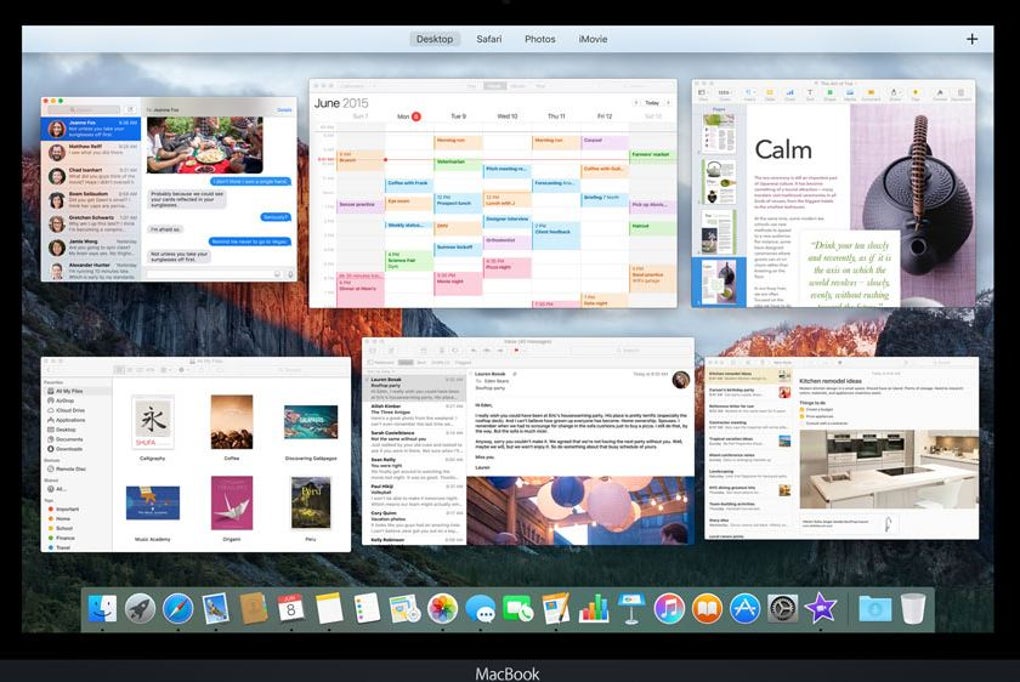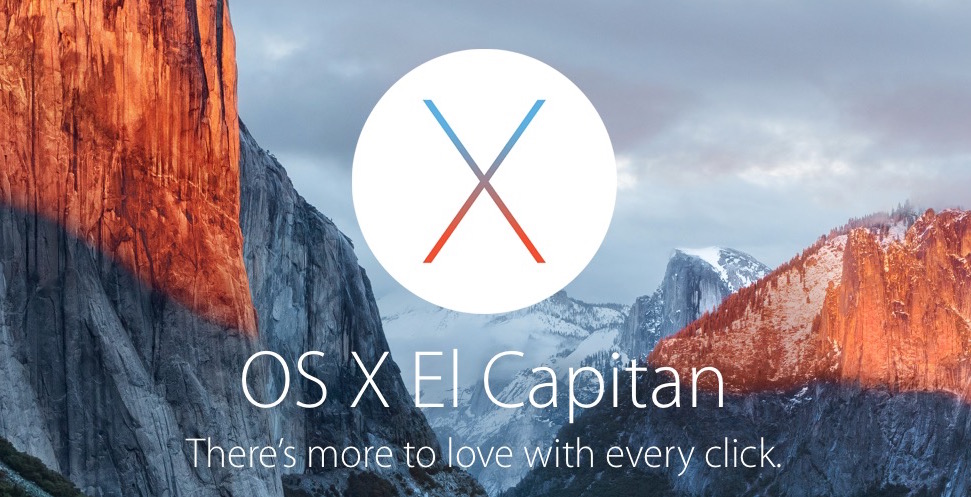Yes, upgrade from OS X El Capitan to macOS Mojave is absolutely possible. Check the below solution to upgrade from El Capitan to directly Mojave without facing any data loss problems.
Step 1: First Check your System Compatibility:-
To download Mac OS X El Capitan from the App Store, follow the link: Download OS X El Capitan. On the El Capitan, click the Download button. Next, a file Install OS X El Capitan will download into the Applications folder. When the download is over, the installer will launch automatically. New Apple MMGG2LL/A MacBook Air 13.3-Inch Laptop (1.6 GHz Intel Core i5, 8GB RAM, 256GB SSD, Mac OS X V10.11 El Capitan), Silver 4.6 out of 5 stars 54 Best Seller in Antivirus. If your Mac is running El Capitan, Sierra, or High Sierra, here's how to download macOS Mojave. 3.1)First, click on the Apple icon in the upper left corner of your screen. 3.2)Click on App Store. 3.3)Click on the Featured. OS X El Capitan Kernel The OS X kernel is based on FreeBSD and Mach 3.0 and features an extensible architecture based on well-defined kernel programming interfaces (KPIs). OS X was the first operating system to ship as a single install that could boot into either a 32-bit or 64-bit kernel, either of which could run 32-bit and 64-bit applications.
First and foremost, make sure your Mac is compatible with macOS Mojave. In general, most Macs from 2012 or newer are compatible. Here's a list of Macs that can run macOS Mojave:-
1.1)MacBook (Early 2015 or newer)

1.2)MacBook Air (Mid 2012 or newer)
1.3)MacBook Pro (Mid 2012 or newer)

1.4)Mac mini (Late 2012 or newer)
1.5)iMac (Late 2012 or newer)
1.6)iMac Pro (2017)
1.7)Mac Pro (Late 2013, plus mid-2010 and mid-2012 models with recommended Metal-capable GPU)
Step 2: Take Mac Data Backup
Before downloading any major update to your Mac operating system, it is very important to backup your data. The best way to ensure a smooth transition from an older operating system to Mojave is with Time Machine. If you don't already have a backup plan in place, there are a few options you can check out.
Step 3: Download and install macOS Mojave
Apple has made it very easier to simply download and install Mojave, even if you are running an older operating system. If your Mac is running El Capitan, Sierra, or High Sierra, here's how to download macOS Mojave.
3.1)First, click on the Apple icon in the upper left corner of your screen.
El Capitan Mac Os Version
3.2)Click on App Store.
3.3)Click on the Featured.
3.4)Click on macOS Mojave in the Mac App Store.
3.5)Click on Download under the Mojave icon.
3.6)Wait for macOS Mojave to finish downloading.
3.7)Click Install to begin the installation process.
After following the above steps, you will be able to upgrade your operating system from Mac OS X El Capitan to macOS Mojave.

Dec 29, 2018 1:17 AM
To get the latest features and maintain the security, stability, compatibility, and performance of your Mac, it's important to keep your software up to date. Apple recommends that you always use the latest macOS that is compatible with your Mac.
Learn how to upgrade to macOS Big Sur, the latest version of macOS.
Check compatibility
If a macOS installer can't be used on your Mac, the installer will let you know. For example, it might say that it's too old to be opened on this version of macOS, or that your Mac doesn't have enough free storage space for the installation.
To confirm compatibility before downloading, check the minimum requirements for macOS Catalina, Mojave, High Sierra, Sierra, El Capitan, or Yosemite. You can also find compatibility information on the product-ID page for MacBook Pro, MacBook Air, MacBook, iMac, Mac mini, or Mac Pro.
Make a backup
Before installing, it’s a good idea to back up your Mac. Time Machine makes it simple, and other backup methods are also available. Learn how to back up your Mac.
Download macOS

It takes time to download and install macOS, so make sure that you're plugged into AC power and have a reliable internet connection.
Safari uses these links to find the old installers in the App Store. After downloading from the App Store, the installer opens automatically.
- macOS Catalina 10.15 can upgrade Mojave, High Sierra, Sierra, El Capitan, Yosemite, Mavericks
- macOS Mojave 10.14 can upgrade High Sierra, Sierra, El Capitan, Yosemite, Mavericks, Mountain Lion
- macOS High Sierra 10.13 can upgrade Sierra, El Capitan, Yosemite, Mavericks, Mountain Lion
Safari downloads the following older installers as a disk image named InstallOS.dmg or InstallMacOSX.dmg. Open the disk image, then open the .pkg installer inside the disk image. It installs an app named Install [Version Name]. Open that app from your Applications folder to begin installing the operating system.

El Capitan Mac Os Requirements
- macOS Sierra 10.12 can upgrade El Capitan, Yosemite, Mavericks, Mountain Lion, or Lion
- OS X El Capitan 10.11 can upgrade Yosemite, Mavericks, Mountain Lion, Lion, or Snow Leopard
- OS X Yosemite 10.10can upgrade Mavericks, Mountain Lion, Lion, or Snow Leopard
El Capitan Mac Os X Download
Install macOS
Follow the onscreen instructions in the installer. It might be easiest to begin installation in the evening so that it can complete overnight, if needed.
If the installer asks for permission to install a helper tool, enter the administrator name and password that you use to log in to your Mac, then click Add Helper.
El Capitan Macos Version
Please allow installation to complete without putting your Mac to sleep or closing its lid. Your Mac might restart, show a progress bar, or show a blank screen several times as it installs macOS and related firmware updates.
Learn more
El Capitan Macos 10.11
You might also be able to use macOS Recovery to reinstall the macOS you're using now, upgrade to the latest compatible macOS, or install the macOS that came with your Mac.




